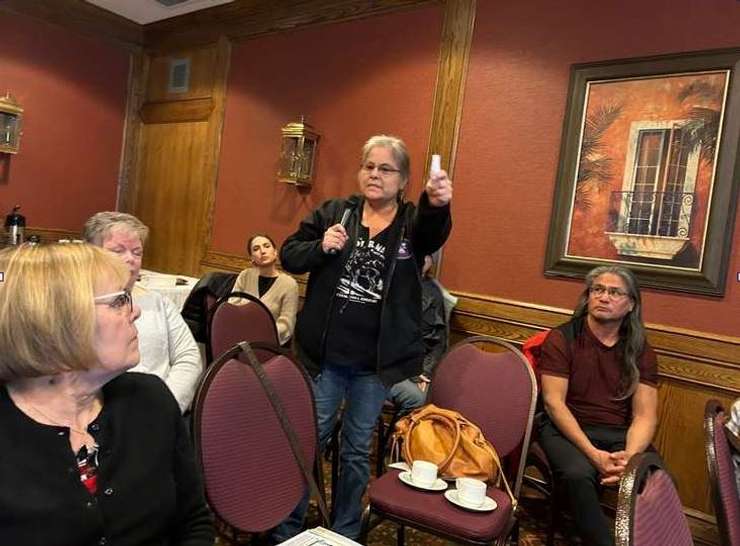
NationTalk: LONDONNewToday.ca – An air exposure review of the Sarnia area, which looked at air quality dating back to 2015, has found that there are elevated airborne concentrations of benzene.
The final results of the Sarnia Area Environmental Health Project were released Wednesday evening in Point Edward.
Benzene is a chemical that is clear or light-yellow in colour that is primarily used in pharmaceutical industries, a starting material in other chemicals and in gasoline. The results found that this chemical can increase the risk of blood cancers, such as leukemia.
It also found that the northern parts of the Aamjiwnaang First Nation and the industrial areas in south Sarnia are at the highest risk.
Project Lead Glenn Ferguson said to keep on top of the concentration levels, monitoring is key. “The only way you can determine if concentrations are going down is to monitor the air to prove that,” said Ferguson.
As for the next step Intrinsik, who completed the assessment, will be completing its report. He said the Ministry of Environment, Conservation and Parks will have to come together with stakeholders, rights-holders and industries to see what the next steps are and reduce the concentrations.
“Ultimately if it’s industry emitted then industries have to address those concerns and it will be up to the ministry to update the regulations or enforcement, abatement,” said Ferguson.
To lower the levels of benzene the assessment is recommending for industries to make all the needed pollution control improvements.
For some people who attended the event the results were not a surprise to them.
Stacy Nahdee said that the community needs to be worried about these results. “We believe we’re trying to do our best as stewards of the land and our best isn’t helping because there’s no regulations being put in place that will totally prevent all of these emissions that are going into the land, the air, the water,” he said.
During the question and answer part of the presentation Nahdee asked about criminality when it comes to these harsh chemicals in the Sarnia area. He said he didn’t get the answer he was looking for. “Still nobody is being brought forward to justice. Fines don’t repair people’s health, it doesn’t help really at all. All it’s saying is well we had some rules and you broke it and you have to have this consequence,” Nahdee said.
He also believes that the consequences do not benefit the people that are suffering the risks such as cancers.
One of the areas where benzene was found was by the Aamjiwnaang First Nation band office which is near a playground. Nahdee said he has a 14 month old granddaughter and he’s concerned about her health. “She is in the daycare and she is going to be growing up in Aamjiwnaang and I need to know how can I prevent her from suffering from benzene that’s being emitted into the community,” he said.
Nahdee also said that no one should have to be moved from their community for a healthy lifestyle. He said with the results coming out it is great that the community can come together and talk about it. “It’s starting to show that more needs to be done now, not later, not twenty years from now either,” Nahdee said.
The health study also looked at other chemicals and risks, including fine particulate matter. It found that at high concentrations, it can harm people with respiratory and cardiovascular issues.
It also looked at sulphur dioxide, but found that it has a low chance of causing health issues, even for those with breathing problems.
The next step will now be that a full report will be completed and then released. It is unclear how long that will take.
